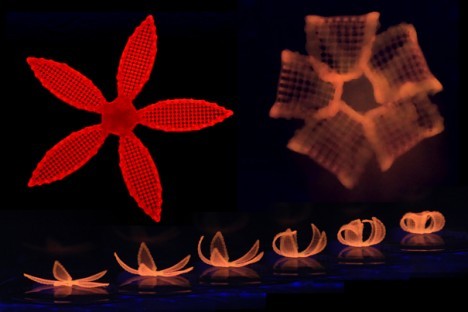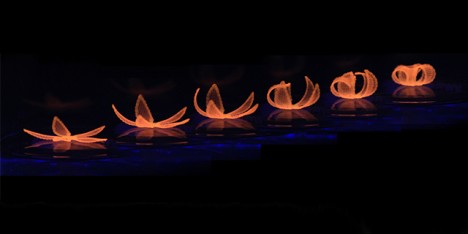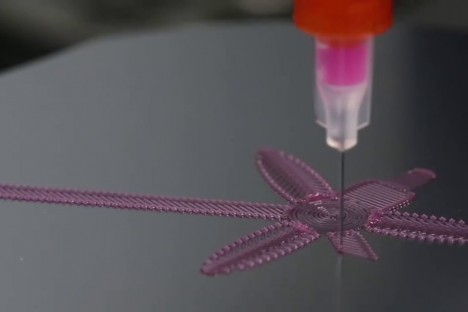
A team of biologists and engineers have evolved their micro-scale 3D printing technology to add a fourth dimension: time. Inspired by natural structures like plants, which shift shape in response to environmental stimuli, the Harvard University team has unveiled 4D-printed hydrogel composite structures that change in the presence of water.
The orchid-shaped structure is printed with a hydrogel composite ink containing aligned cellulose fibrils, which enable anisotropic swelling. A mathematical model predicts the precise shape transformations in advance.

“This work represents an elegant advance in programmable materials assembly, made possible by a multidisciplinary approach,” said Jennifer Lewis, senior author on the new study. “We have now gone beyond integrating form and function to create transformable architectures.”
In nature, the tissue composition and microstructures of flowers and plants allow environmental changes, like tendrils, leaves and flowers folding and unfolding in response to wind, light and sun. These 4D-printed forms use similar processes, aligning elements during printing to facilitate stiffness and flexibility.

The new method opens up new potential applications for 4D printing technology, including smart textiles, soft electronics, biomedical devices, and tissue engineering.
“Using one composite ink printed in a single step, we can achieve shape-changing hydrogel geometries containing more complexity than any other technique, and we can do so simply by modifying the print path,” said Gladman. “What’s more, we can interchange different materials to tune for properties such as conductivity or biocompatibility.”

